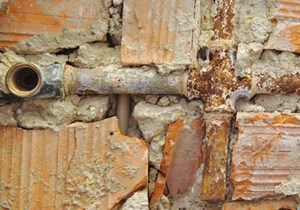EPA issues guidance to help communities locate dangerous lead water pipes
The U.S. Environmental Protection Agency is releasing guidance that will help communities and water utilities identify lead pipes that connect drinking water service to homes and other buildings.

This action marks a key milestone in implementing the Biden-Harris Administration’s Lead Pipe and Paint Action Plan. Together with unprecedented funding from the Bipartisan Infrastructure Law, this guidance will help water utilities comply with the requirements of the Lead and Copper Rule Revisions that went into effect in December 2021 and make rapid progress on removing harmful lead from America’s drinking water.
“There is no safe level of lead exposure, and it is essential that we accelerate progress on locating lead pipes that deliver drinking water where people live, work, and play,” said EPA Assistant Administrator for Water Radhika Fox. “Under President Biden’s leadership, EPA is committed to working with states, Tribes, and water utilities to get the lead out of our drinking water. We are using every tool available, including providing this important guidance, strengthening the Lead and Copper Rule, and investing $15 billion through the Bipartisan Infrastructure Law to remove lead pipes.”
Specifically, EPA’s new Guidance for Developing and Maintaining a Service Line Inventory:
- Provides best practices for inventory development and risk communications.
- Contains case studies on developing, reviewing, and communicating about inventories.
- Includes a template for water systems, states, and Tribes to use or adapt to create their own inventory.
- Highlights the importance of prioritizing inventory development in disadvantaged communities and where children live and play.
Under the Lead and Copper Rule Revisions, water systems are required to prepare and maintain an inventory of service line materials by October 16, 2024. EPA’s new guidance will assist water systems in developing and maintaining service line inventories, support notifications to consumers served by lead pipes, and provide states with needed information for oversight and reporting to EPA.
This guidance will also facilitate investment of $15 billion in funding through the Bipartisan Infrastructure Law (BIL) that is dedicated to lead service line replacement. BIL funding can be used for lead service line replacement projects and associated activities directly connected to the identification, planning, design, and replacement of lead service lines, including development of service line inventories themselves.
EPA will continue to strengthen actions to protect communities from lead in drinking water. This guidance alongside regulatory improvements, infrastructure investments and other actions, are significant steps toward the goal of replacing 100% of lead service lines.
Learn more about safe drinking water, EPA’s new guidance (including an upcoming webinar) and efforts to strengthen the Lead and Copper Rule, and EPA’s water infrastructure investments through the Bipartisan Infrastructure Law.
Related News
From Archive

- Glenfarne Alaska LNG targets late-2026 construction start for 807-mile pipeline project
- U.S. water reuse boom to fuel $47 billion in infrastructure spending through 2035
- $2.3 billion approved to construct 236-mile Texas-to-Gulf gas pipeline
- Major water pipe break in Puerto Rico hits over 165,000 customers
- Potomac River Tunnel project enters construction phase beneath Washington, D.C.
- Pennsylvania American Water launches interactive map to identify, replace lead water service lines
- Trump's tariffs drive $33 million cost increase for Cincinnati sewer project
- Utah city launches historic $70 million tunnel project using box jacking under active rail line
- Tulsa residents warned after sewer lines damaged by boring work
- Fatal trench collapse halts sewer construction in Massachusetts; two workers hospitalized



Comments